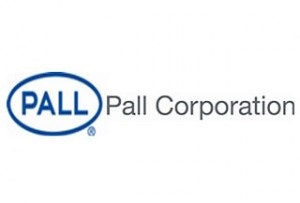Pall Corporation (NYSE:PLL) is one of the leading producers of filters for use in a variety of industries. With the market at, or very close to, all-time highs, it becomes more important than ever to hunt for the remaining bargain plays. A lot of times you can find these in sectors that don’t get much coverage by the financial media, and that is what leads me to take a closer look at Pall Corporation (NYSE:PLL).
Who is Pall Corporation?

Pall Corporation (NYSE:PLL) does have some serious competitors, including 3M Co (NYSE:MMM), General Electric Company (NYSE:GE), whose infrastructure unit produces filtration equipment, and Siemens AG (ADR) (NYSE:SI)’ U.S. Filter. There are also smaller, specialized companies such as Flowserve Corporation (NYSE:FLS) and Pentair, Ltd. Registered Share (NYSE:PNR). More on the competitors a little later…
The Numbers
Pall Corporation (NYSE:PLL) does trade at a relatively high P/E of 24.5 times last year’s earnings, but don’t let that turn you off just yet. The one aspect of Pall that really caught my eye was the growth that is projected over the next few years. Pall is expected to earn $3.08 per share this year, and increase their earnings to $3.57 and $4.07 in 2014 and 2015, respectively, for an average annual earnings growth rate of 13.3%, due mostly to expected growth in Pall’s medical business.
Pall also has an excellent balance sheet with more cash on hand than debt, and the company pays out a decent 1.5% dividend yield, which has been raised fairly consistently over the years.
Alternatives
The alternatives to Pall fall into two categories. The first group is rival companies that are specialized product producers, such as Flowserve or Pentair. The second choice would be to invest in a more diversified company such as General Electric, whose filtration business makes up a significant, but small portion of their revenues.
Flowserve is about the same size as Pall and is not really a filter company, but a manufacturer of “fluid motion and control products,” such as pumps, seals, and valves. Even though their products are different, they target very similar end markets, making this a good comparison. Flowserve trades for a slightly lower valuation than Pall at 19.6 times TTM earnings, with a very similar forward growth rate of 13%. Bear in mind, however, that Flowserve pays a lower dividend and does not have such a favorable balance sheet, with about $870 million in debt and just over $300 million in cash.
Based in Switzerland, Pentair’s product line is sort of a combination of that of the previous two companies, producing flow control as well as filtration equipment. Pentair trades at a similar valuation to Pall of 24.3 times TTM earnings, however the company has the highest projected forward earnings growth rate of the group at just over 21%. The company pays a 1.6% dividend yield, but has over $2.4 billion in debt, and a very inconsistent record of earnings growth, two big red flags for me.